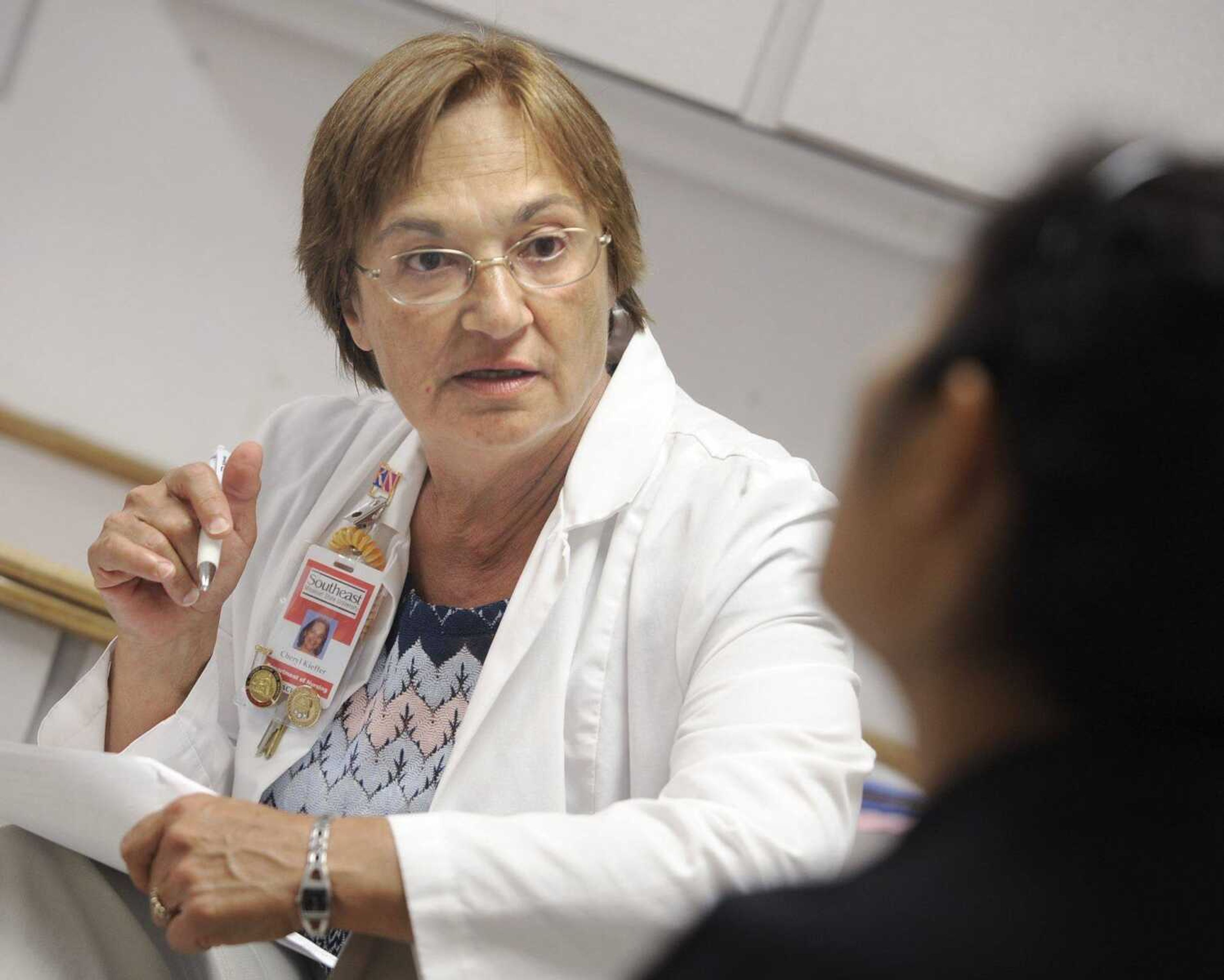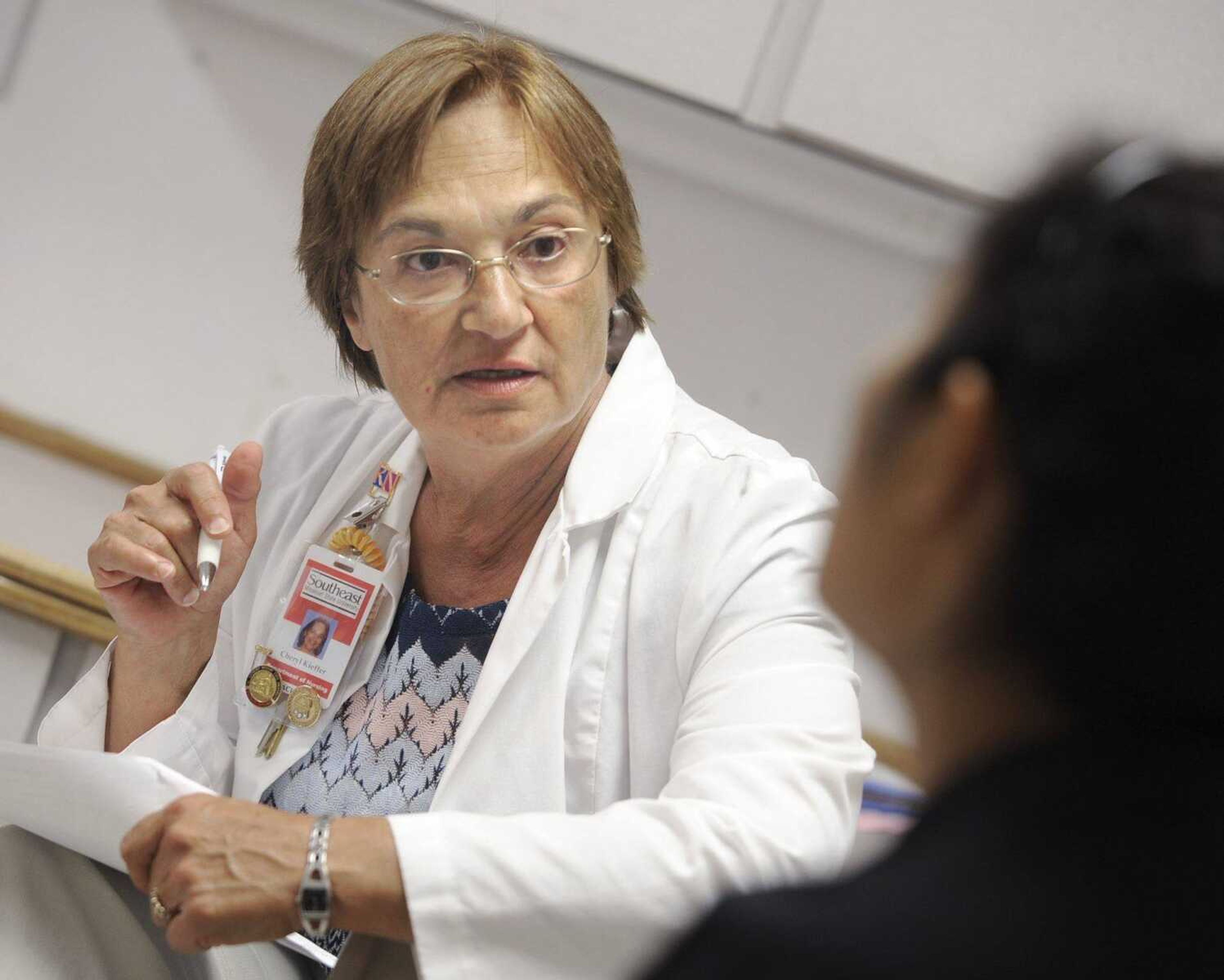Southeast Missouri is seeing a shortage of nurses in hospitals
All signs point to a shortage of nurses and other health care professionals coming to Southeast Missouri. Regional educational institutions with programs in health care study are facing maxed-out resources. Qualified faculty to teach nursing courses are becoming increasingly more difficult to find, and slots for students to participate in clinicals at area hospitals and other health care facilities are full...
All signs point to a shortage of nurses and other health care professionals coming to Southeast Missouri. Regional educational institutions with programs in health care study are facing maxed-out resources. Qualified faculty to teach nursing courses are becoming increasingly more difficult to find, and slots for students to participate in clinicals at area hospitals and other health care facilities are full.
Those indicators for a shortage in the nursing field are seen in nursing schools nationwide. Schools have to limit enrollment at a time when more nurses than ever need to be graduating and entering the workforce, area nurse educators say.
The problem definitely isn't that no one wants to become a nurse. U.S. nursing schools turned away more than 75,000 qualified applicants from undergraduate and graduate nursing programs in 2011, according to a recent report by the American Association of Colleges of Nursing.
In 2010, a task force consisting of representatives of area hospitals, businesses and colleges was developed by the advisory committee of the Cape Girardeau Partnership for Higher Education for the purpose of analyzing a nursing shortage in Southeast Missouri. What that task force found, said Rich Payne, director of the career and technology center, was that there is a need to increase capacity in the region's health care education programs, but also that there was expansion already taking place.
The task force collected reports from the region's community colleges, nursing schools and universities that showed five examples of that expansion in the past year. The schools, including the Cape Girardeau Career and Technology Center, Mineral Area College, Three Rivers College, SoutheastHEALTH College of Nursing and Health Sciences and Southeast Missouri State University, all reported adding new bridge programs or expanded seats in existing programs.

The Career and Technology Center added seven seats to its LPN evening program. Mineral Area is starting a hybrid LPN to RN program and a paramedic to RN bridge program. Three Rivers was taking over LPN programs in southern counties to attempt to improve retention. SoutheastHEALTH is also starting a paramedic to RN program. Southeast Missouri State recently began online bridge programs.
"If you look at that collectively, it's a pretty good increase throughout the region on the nursing side," Payne said.
Jeannie Fadler, Saint Francis Medical Center's vice president of patient care services, said colleges in Southeast Missouri have been very creative in making bridge programs work for increasing the availability of nurses to hire, but that there is a definite need to continue collaboration between health care facilities and colleges so that the colleges can hopefully increase capacity in programs.
The availability of clinical space is definitely a limiting factor in student enrollment, said Donna Shirrell, dean of education at South-eastHEALTH's College of Nursing and Health Sciences. Shirrell and Southeast Missouri State University nursing department chair Dr. Gloria Green say too many students participating in clinicals at one time can become a burden for nursing units. The quality of experience students gain from their clinicals is also important, so sessions have to be scheduled at certain times to coincide with applicable hospital activities, Green said.
Green assisted the task force in examining the availability of clinical sessions at area health care facilities, including Saint Francis and SoutheastHEALTH, and found that adding more students to the number already participating would overstress an already stretched capacity and could result in detriments to patient care.
"Unless someone opens another 500-bed hospital, the numbers can't change," she said.
Shirrell said SoutheastHEALTH is constantly looking at innovative ways to provide clinical experiences.
Enrollment in Southeast Missouri State University's undergraduate nursing program is limited to 35 students per semester due to rules set by the state board of nursing. Ten additional seats have been available in recent semesters due to a grant that several state universities are using to hire more faculty and train students.
Interest in the university's nursing programs is high among students, Green said. During the spring semester, 671 had declared themselves as a pre-nursing major. But only a handful of those will ever reach enrolling for programs. The nursing department only accepts the "cream of the crop," Green said, by accepting only the highest grade earners. Green said she knows the situation is frustrating for students, but actually benefits the nursing program and later the employers who hire graduates, she said.
"We get the best, and that's who we want in nursing, certainly," she said.
It is, however, sad, she said, that even with the high acceptance standards in place, that the department can only take about half of even the best students.
SoutheastHEALTH's nursing school admits 90 students per year into a traditional nursing track, an LPN to RN accelerated track, an evening-weekend nursing track and a paramedic to RN nursing track. Those slots fill quickly, Shirrell said, and are filled for this year, next year and some already for 2014. Admission requires an ACT score of 21 and equivalent COMPAS scores. College GPA and other criteria are also used to make decisions on admission.
A shortage of nursing faculty, a root problem in not being able to expand enrollment, is also a factor that will press a nursing shortage and one that area colleges are working to head off at the pass. An aging nurse educator workforce is the main reason, research studies show.
Southeast Missouri State University's nursing department has had several retirements in recent years, and SoutheastHEALTH's College of Nursing expects some retirements in the near future, Green and Shirrell say.
The problem is worsened by fewer nurses opting to become nurse educators when furthering their qualifications because salaries are more for nurse practitioners, Green said. She's replaced four of five faculty lost at the university but is still working to find two more to fill the department's staff roster, she said.
The university is working to encourage its faculty to continue as nurse educators and expand their teaching qualifications by offering a program where they can be reimbursed for a portion of educational costs. SoutheastHEALTH has partnered with Cox College in Springfield, Mo., to offer an associate's to master's degree program to alumni in order to help prepare additional nursing educators for the colleges in Southeast Missouri.
The task force plans to meet twice annually to examine data on nursing programs and efforts to keep graduates of the region's nursing schools working in Southeast Missouri health care facilities.
Fadler said she is glad to see colleges already making moves to attempt to reduce the effect of a nursing shortage in the region.
"I'm not saying all the measures taken will completely stop it," she said. "But I am optimistic when I see that there is already a lot being done. It is very encouraging."
Shirrell said the nursing shortage so far has not been as severe as anticipated. With the economic downturn, many nurses have re-entered the work force or have chosen not to retire, she said.
eragan@semissourian.com
388-3627
Pertinent address:
1080 S. Silver Springs Road, Cape Girardeau, MO
One University Plaza, Cape Girardeau, MO
2001 William St., Cape Girardeau, MO
211 Saint Francis Drive, Cape Girardeau, MO
Connect with the Southeast Missourian Newsroom:
For corrections to this story or other insights for the editor, click here. To submit a letter to the editor, click here. To learn about the Southeast Missourian’s AI Policy, click here.










